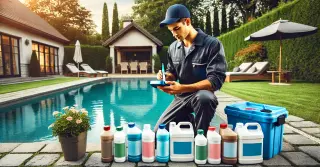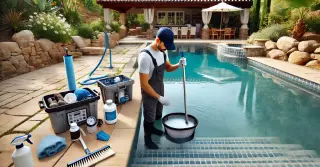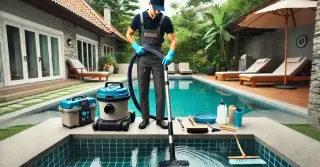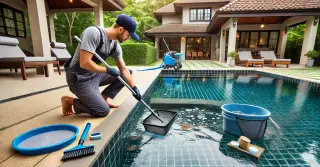Pool Chemical Balance Pinellas County FL

Ensuring the right chemical balance is essential for a safe and enjoyable swimming experience. Balanced chemicals inhibit algae and bacteria, maintain clear, clean water, and protect the pool's surface and equipment.
- Maintaining Proper pH: The pH balance in your pool indicates its acidity or alkalinity. A balanced pH level should be between 7.2 and 7.6. Low pH levels result in acidic water, causing skin irritation and equipment corrosion. Alkaline water from high pH causes cloudiness and scaling. Consistently testing and adjusting pH levels is vital for swimmer comfort and safety.
- Monitoring Chlorine Levels: Chlorine is essential for pool hygiene, as it kills bacteria, algae, and other harmful microorganisms. Optimal chlorine levels range from 1 to 3 ppm. Insufficient chlorine results in unsanitary conditions, promoting bacteria and algae growth. High chlorine levels result in skin and eye irritation and produce a strong chlorine odor. Frequently checking and balancing chlorine levels maintains sanitation and comfort.
Managing Total AlkalinityTotal alkalinity is another critical aspect of pool water chemistry. Alkalinity stabilizes pH levels, helping to prevent drastic changes in pH. The ideal range for total alkalinity is between 80-120 ppm.
- Preventing pH Swings: Balanced alkalinity stabilizes pH levels, preventing rapid changes that can cause skin irritation and damage to pool surfaces. Low alkalinity results in unstable pH levels, making balance maintenance challenging. If alkalinity is too high, it can make the water cloudy and lead to scaling. Regularly testing and adjusting alkalinity levels is crucial for stable and balanced water.
- Balancing Calcium Levels: Calcium hardness refers to the amount of dissolved calcium in the pool water. Proper calcium hardness levels range from 200 to 400 ppm. Insufficient calcium causes corrosive water, damaging surfaces and equipment. If calcium levels are too high, it can cause scaling on pool surfaces and cloud the water. Frequent calcium hardness testing and adjustments is essential for pool protection and clear water.
Using Pool Chemicals SafelyProper handling and storage of pool chemicals is essential for both safety and effectiveness. Store chemicals in a cool, dry place, away from direct sunlight and out of reach of children and pets. Adhere to manufacturer guidelines for proper dosing and application.
- Measuring and Mixing Chemicals: Precise measurement of pool chemicals is crucial for maintaining balance. Inaccurate dosing can disrupt the chemical balance and affect water quality. Use a clean, dry measuring cup or scoop and never mix chemicals directly with each other. Mix chemicals in water if required, following the instructions carefully.
- Awareness of Chemical Reactions: Some chemicals can react dangerously when combined. For example, chlorine and acid should never be mixed. Knowing these interactions avoids accidents and ensures safe use. Store chemicals apart and handle each carefully to prevent harmful reactions.
Ensuring the right chemical balance in your pool is vital for a safe, clean, and pleasant swimming experience. By frequently testing and balancing pH, chlorine, alkalinity, and calcium, you can keep your pool water in optimal condition.
Safe use and storage of pool chemicals improve the safety and longevity of your pool.




